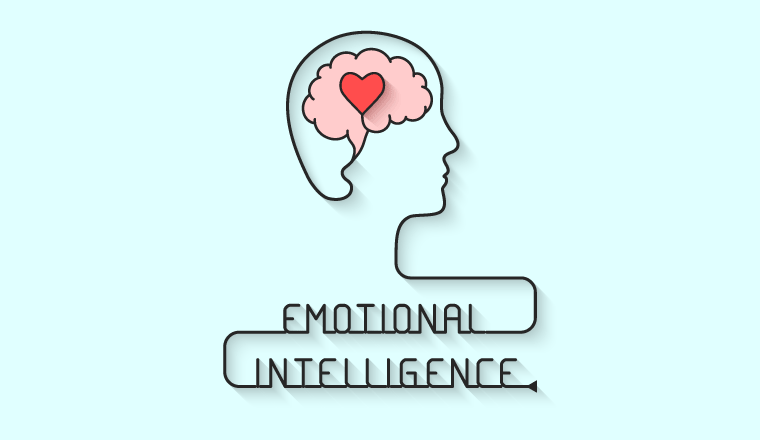
As of 2021, there are 4.66 billion internet users across the globe and tens and thousands of companies and brands present across the geographical destinations are reaching them online and offline. They are offering products, services, employment, and investment, facilitating trade, engaging in R&D, and furthering innovations.
Multinational companies are termed as global goliaths as they are steadily reaching global demographics with their activities in many ways. For them, Information, data, and technology are three major components to understand customers amidst gender, income, geographical, educational, physiological, psychological, and professional variations. People, who are the end-users of various products and services as employees, customers, vendors, and other stakeholders may have varied needs. Brands or companies constantly collect information on these segments to design products and services and to get connected to them emotionally by meeting their linguistic or cultural nuances.
What is Cultural Intelligence?

Cultural intelligence is “the knowledge, skill, and ability to engage people of different backgrounds and cultures effectively and efficiently.” Cultural intelligence is needed to reach consumers, employees, and the community through nuances that may vary from person to person, and from place to place.
Basic Components of Cultural Intelligence
The three most important components of cultural intelligence (CQ) include cognitive, emotional/motivational, and physical aspects that influence the perceived service quality of a brand in reaching a specific group of audience. If a brand is successful in understanding the cultural diversities of its audience, it can develop products or services to meet the needs of that particular segment.
In return, brands win customers’ loyalty, essential for their sustainability. Factors like customer beliefs, product cost, and information on alternative products that the customer possesses, may also shift customer loyalty towards brands. Brands that hold command over the cultural intelligence of their target audience act accordingly to win their confidence.
Importance of Cultural Intelligence for Brands
Horowitz, a market research company, for example, found that Black households of the US are disconnecting MVPD cords drastically since 2017. The study found that MVPD penetration among Black households has declined from 88% in 2017 to 61% in 2021, resulting in a 25% decrease in three years. Age and income levels were two decisive factors that have influenced audience loyalty here. 80% of the users that got disconnected felt that they have saved a decent amount because they fall under the low-income group. While older members of the Black households still like to have traditional TVs with antennas, younger generations are moving away from it. Cable TV providers and traditional TV channels must get clues from such intelligence to make appropriate changes to retain customers.
How Brands can make the Best Use of Cultural Intelligence?
Brands constantly engage in market research to collect data on stakeholders and utilize them to design products and services to meet their immediate or future needs. They also employ these details for positioning the brand by targeting a specific group. Facebook, for example, is planning for corporate rebranding soon.
Facebook has got research insight that its products and services are not appealing to millennials and Gen Zers. Facebook is also tough competition from new and emerging interactive digital platforms like TikTok that have amassed fan-following among the younger generations. Facebook, therefore, has plans to redesign its products, renaming them with a new brand name.
Brand Positioning using Emotional Intelligence

Although several online video calling devices are facilitating live interaction of the families online, none of them have positioned their devices the way Facebook did. Facebook banked on emotional intelligence to promote its new video calling device portals, “Portal Go” and “Portal+” in the U.K. It developed the strategy around the insight that approximately 2 million grandparents can meet their grandchildren only once a year in the U.K. The campaign narrates the story of a grandfather getting ready to meet his granddaughter virtually.
The commercial projected a picture as if he is physically meeting her with a statement that “There are incredible mental and physical benefits the bond between these two generations can unlock when they’re able to connect more often.”
How Cultural Intelligence Promote Corporate Image?
Companies engaged in tourism, travel, hospitality, food, entertainment, and logistics must interact directly with the end-users to deliver their services. Companies with cognitive, emotional, cultural, and intellectual intelligence on their customers would design promotional content that resonates with customer expectations. Dominos, the world’s largest chain of Pizza restaurants, has built a corporate identity that loves to serve delicious food. It offers an extensive menu, featuring a wide range of pizzas, side dishes, refreshing beverages, and enchanting desserts and projects a corporate image of offering a complete meal experience to its customer. It also honors its customer’s values (Veg/non-veg), tastes, and preferences. It allows them to customize a pizza of their choice, where customers can choose the amount of cheese they want on a pizza, the kind of topping they like, and the kind of crust they relish.
Cultural Intelligence and Customer Loyalty

Brand Keys, a brand research consultancy that is specialized in predictive consumer behavior, brand equity, loyalty, and engagement metrics has announced customer loyalty rankings for the year 2020 and Amazon topped the list as NO1 online retailer and Apple, Netflix, and Domino’s Pizza have followed it, occupying the remaining three positions. Although Brand Keys has been releasing these rankings for the past 24 years, there was a significant shift in the consumer’s behavior in 2020, due to the sporadic spread of the pandemic and its related forced shutdown of the markets. Consumers were not loyal to a specific brand in this period, as they tried several new products, services, and brands, which offered to them. Yet, Amazon, Apple, and Netflix have done something very differently, what the others failed to do.
Why did consumers embrace these brands amidst Pandemic-spurred chaos?
Apart from adopting several evolving technologies to drive customer satisfaction, these brands have grasped the cultural traits of their customers across the geographic locations and cultures, which are not similar. They have honored the linguistic, geographical, demographic, and cultural diversities and tried to reach the last mile in serving customers’ expectations when they are stuck during the pandemic. They have simply adhered to the traditionally acclaimed practice of collecting cultural intelligence to design products and services that appeal to the multiple, yet unique needs of customers.
Cultural Intelligence for Workforce in Cross-cultural Settings

At present, marketers and brands are forced to work under cross-cultural work atmospheres in customer centers and across the company’s overseas branches. Most of these interactions take place virtually, where non-verbal cues will be missing. Intercultural and cross-cultural service encounters are inevitable in the market and organizations, where customers and service employees from different cultures interact.
Unless these employees possess the skills and knowledge to handle customers of diverse cultures, companies may find it hard to sustain the brand loyalty of customers. In the wake of saturated markets in the developed world, companies are aiming at emerging markets for brand extension. The workforce needs to be trained to handle such cross-cultural work encounters. According to an American Express study, over 50% of Americans have canceled a planned purchase because of poor customer service. One-third of survey respondents said they think about changing companies following a single poor service experience.
Leading Role of Technology in Meeting Cultural Transition
Companies are increasingly embracing AI-powered machine translation (MT), voice recognition, and computer vision tools for translation and localization of digital content. . Machine learning (ML) and the natural language processing techniques are equally effective in transcending cultural barriers through translation management systems (TMSs), for streamlining workflows, and to improve cross-channel localization.
Companies are getting equipped with voice assistants, chatbots, and real-time translation tools to engage customers with voice-first technology. These tools provide a rich and comfortable customer interface, as they understand, translate and converse in multiple languages.
Final Thoughts
Despite technological advancements, facilitating cultural transition, companies need to adapt to the policies of inclusiveness by reaching out to historically underrepresented groups. It is equally essential to create awareness in the workforce to embrace cultural diversity, self-regulation by honoring other cultures, and remaining empathetic to other cultures. These policies must get reflected in companies’ marketing and promotional communication. Companies that have honored the cultural and emotional intelligence of customers can scale their business to diverse, global markets. For more on the role of cultural intelligence in promoting brands, read our blogs on Digital Grocery and social commerce experiences in emerging markets.
